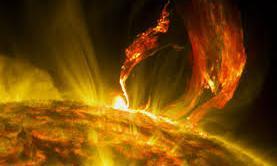
ISRO's Aditya-L1 captures solar fury with sensing devices onboard
text_fieldsRepresentational.
Bengaluru: The Indian Space Research Organisation (ISRO) informed that the remote sensing instruments onboard its Aditya-L1 spacecraft have captured the recent solar fury, PTI reported, citing the space agency's account.
India's maiden solar mission, Aditya-L1, reached the Lagrangian point (L1) on January 6 this year, 127 days after it was launched on September 2, 2023. L1 is located roughly 1.5 million km from Earth and enables the spacecraft to view the Sun continuously.
The Solar Ultra Violet Imaging Telescope (SUIT) and the Visible Emission Line Coronagraph (VELC) have captured the dynamic activities of the Sun during May 2024, ISRO said in a statement.
"Several X-class and M-class flares, associated with Coronal Mass Ejections (CMEs), leading to significant geomagnetic storms, were recorded," it said.
The Active region AR13664 on the Sun, during its passage during the week of May 8-15, erupted several X-class and M-class flares, which were associated with CMEs during May 8 and 9. These produced a major geomagnetic storm on May 11, it was stated.
ISRO released the Sun images acquired by the SUIT payload on May 17 and also shared details of the observations made by VELC.
In the end of last month, India made a groundbreaking achievement by unveiling the world's first rocket to sport a single-piece three-dimensional (3D) printed engine. Named Agnibaan SOrTeD (SubOrbital Technological Demonstrator), this rocket marks India's pioneering foray into semi-cryogenic engine-powered launches, all achieved through indigenous design and manufacturing. An Indian startup Agnikul Cosmos, nurtured at IIT Madras, prepared the rocket and launched it from a pad inside ISRO premises























